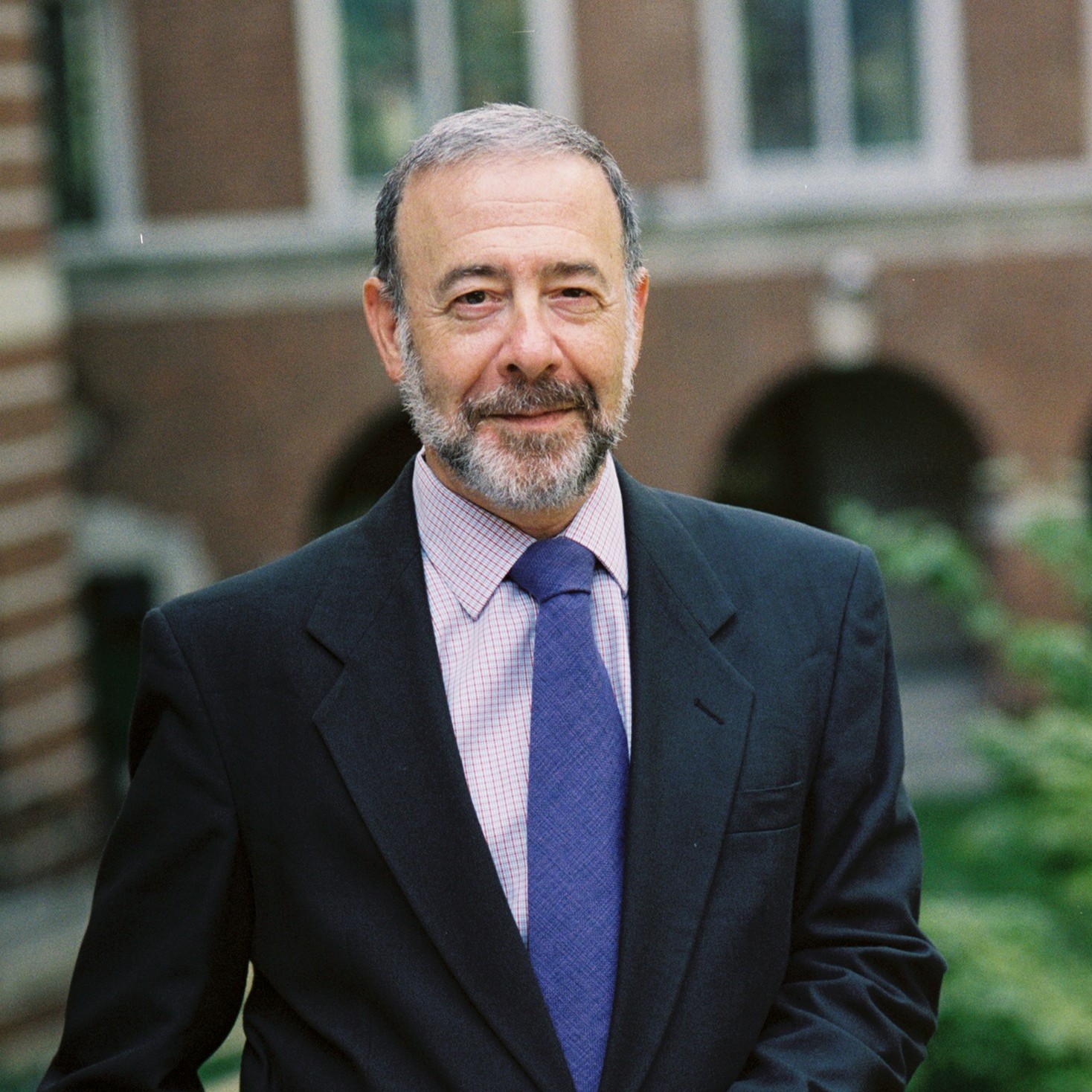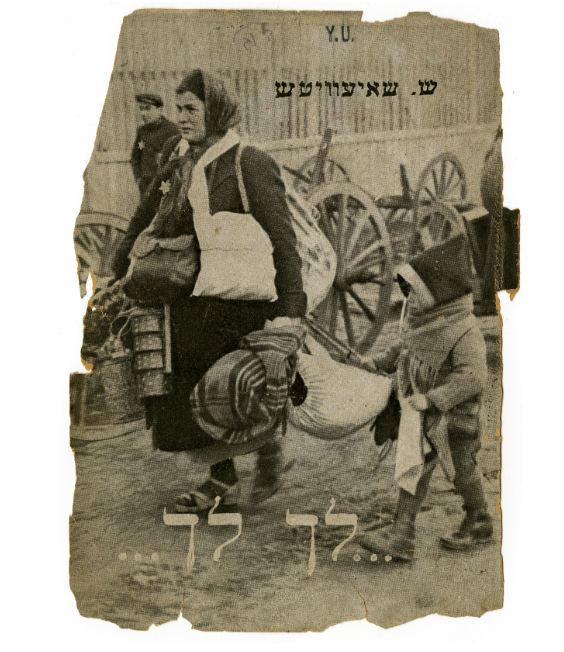Go Forth: The Grammar of Remembrance

Jewish destiny begins with “Lekh-lekha,” “Go forth.” It marks the beginning of our journey through covenantal space; the beginning of our obligations under the terms of the covenant; the beginning of our family romance, so fraught with jealousy and betrayal; and the beginning of our ongoing dialogue with God. God speaks to Abram seven times in the parashah, tracking his every move, until, having reached the age of 99, Abram is addressed for the first time by his new covenantal name of “Avraham.” God speaks to him both oracularly, in verse, and in simple prose; both by day and by night: sometimes in a state of wakefulness and sometimes in a vision.
How full of promise was the oracular voice of God at the beginning of our journey! The Lord’s extravagant words continued to resonate for millennia: “And all the families of the world shall bless themselves by you” (Gen. 12:3). “Fear not, Abram, I am a shield to you. Your reward shall be very great” (15:1). “I will make you exceedingly fertile, and make nations of you; and kings shall come forth from you” (17:6). Later on, however, when the perils of the journey far outweighed the promises, what was supposed to have been a temporary detour along the way portended a terrible finale: “Know well that your offspring shall be strangers in a land not theirs, and they shall be enslaved and oppressed four hundred years” (15:13). There came a time when the words “Lekh-lekha” would point in a very different direction.
For there is a grammar of remembrance, the ABCs of which are the historical archetypes recorded in Scripture—those one-time events that are understood to recur again and again: The command to Abram to “Go forth” from his native land, the binding of his son Isaac on Mount Moriah (the Akedah), the Exodus from Egypt, the 11th-hour rescue of the Jews on Purim, and even the Destruction of the Temple in Jerusalem. These archetypes have enabled Jews throughout the generations to parse, to disassemble, every new experience, both good and bad, according to what came before.
At no time in Jewish history was the grammar of remembrance put to more frequent use than during the Holocaust, and nowhere with such intensity as in the occupied war zone, spanning Europe west and east and pockets of North Africa. Many were the Holocaust’s first witnesses who tried to make sense of the unprecedented events precisely by seeking the most distant analogies. After all, before their eyes both ghettos and yellow stars had been brought back to life, uncanny reminders of the medieval past.
The few survivors, therefore, who banded together in Poland after the war, would easily have deciphered the Hebrew-Yiddish title that appeared on the first publication of the Central Jewish Historical Commission at the Central Committee of Polish Jewry dedicated to Yiddish literature: Lekh-lekho.

Similarly, whether they themselves had survived the Łódź ghetto or not, they would surely have recognized the photograph on its cover as an artifact of the mass deportations. For six long and terrible years, whole communities of Jews had been uprooted from their homes at gunpoint and sent off to a destination unknown. Taken by a professional ghetto photographer at the time of the Szpere, the violent lockdown and mass deportations of September 1942, this photograph depicted a mother whose worldly belongings were strapped to her body while her daughter, all bundled up, walked by her side. It was each family unit by itself and fending for itself. Upon closer inspection, the mother was carrying some food for the road in tin containers, enough to last no more than a day or so. Like their Biblical forebears, the ghetto Jews had set out on foot for the long road ahead. Although large carriage wheels were visible in the background, these wagons apparently, were not intended for them. And they were all of them members of the Chosen People, so identified by a Magen David affixed to their coats.
Finally, there was the matter of the punctuation. The two ancient words were flanked by ellipses. What did this signify? It signified an ancient command that defied all temporal boundaries. It suggested both an echo and a prophecy: Were the mass deportations from the Nazi ghettos the final reenactment of the Lekh-lekha? The cover art was specifically designed to read the documentary and literary evidence from out of the Holocaust against the divine roadmap laid out in the Torah. Who, then, was this latest cartographer named S[imkhe-Bunem] Shayevitsh?
Perhaps he was the speaker in the title poem, 448 lines long, a conversation of a father with his beloved only daughter, Blimele (“Little Flower”). How intimate and muted was the father’s voice, and how brutal his message! “And now, Blimele, dear child,” began his opening address,
Restrain your childish joy,
—that mercurial stream within you—
Let us be ready for the unknown road.
Do not gaze in wonder at me
With your big brown eyes
and do not ask any questions why
we have to leave our home.*
Speaking oracularly, which is to say, in verse, the father used only the simplest diction, so that even a child might understand. His first task was to explain the inexplicable: why, in the dead of winter, a second mass deportation had been decreed, and now it was the turn of this father-mother-and-child to pack up the bare essentials and get ready to leave their ghetto tenement, forever. “Dear lovely child,” he said, “I am / An adult, already grown, / And I don’t know why they’re driving / The bird out of its nest.” How could a father soften the blow of the evil decree for an incredulous child, so full of hope and irrepressible joy? By sharing with her the parents’ profound sense of loss, while trying to instill in her a sense of common destiny. And there was no time to lose; barely enough to give his daughter practical instruction for the present hour, to salvage precious memories from the home they were about to abandon, and to find analogies from the distant and recent past. “Lekh-lekho” was a crash course in Jewish courage and the grammar of remembrance was its core curriculum.
Like the ellipses on the cover, Shayevitsh’s epic poem points us in two directions. It reads the now as if it were a replay of the ancient revealed text, and rereads the Torah, rabbinic law and lore, the liturgy, Hasidism, and the modern Jewish experience in light of the impending deportation. While Blimele is the poem’s named addressee—each of its five parts begins the same way, in medias res, “And now, Blimele, dear child”—“Lekh-Lekho” is really addressed to us, those who will survive to carry on the dialogue. The 34-year-old poet, an esteemed member of the informal Yiddish writers’ group in the Łódź ghetto, was a literate and learned Jew. As such, he could interpret the Torah portion after which his poem is named in ways that it had never been interpreted before:
1. To steel Abram’s resolve, God speaks in the future tense. The covenantal promise will be borne out sometime in the distant future—“shall bless . . . shall be . . . shall come forth”—because God and the First Family do not yet have a shared experience to draw upon. To steel his daughter’s resolve, in marked contrast, the father invokes all available pasthoods. His challenge is to pick and choose those parts of the Jewish past that still have relevance in these nightmare days. “I’ve told you the story / The story of the Cantonists,” he reminds her of a tragic chapter from the recent past, “Poor children kidnapped / Torn away from father and mother. / So why do you wonder, child, / If those times greet the ghetto?” He knows, citing rabbinic case law, that it was considered forbidden for a father to teach Torah to his daughter; nonetheless, she must be taught the weekly Torah portion of “Lekh-lekha,” if only to underscore that there is no comparison. The present tragedy eclipses anything that has ever come before.
2. The covenantal future is only as strong as its Founding Family, and that strength is tested the moment they set out for the Promised Land. Sometimes, it is Abram who saves the day, but mostly, divine intervention is required to guarantee the line of succession. In the ghetto, it’s each family for itself. “And fathers will call to their children / And children demand things from their mothers—/ Families will get lost / And never find themselves.” The future is dead-ended, there is none to bring comfort; “no Jeremiah / To lament the Destruction.” Blimele and her mother stand in for the guardian angels.
3. At some point in the perilous journey ahead, the weakest and youngest link will be put to the ultimate test. This time around, Isaac-Blimele must be made fully aware and be prepared for the sacrifice. And so, the father’s last instruction to his daughter is as follows: “Let us not weep. / Let us not lament, but in spite of all foes / Smile, only smile, so those / Who know the Jews will wonder // And not understand that in our blood / Flows the power of our grandfathers / Who in all generations / Climbed atop so many Moriahs.” In Yiddish, zeydes, “grandfathers,” rhymes with akeydes, the plural of Akedah.
Shayevitsh’s “Lekh-lekho” is both echo and prophecy. The poet could not know what we know—that Blimele and her mother, with a newborn infant son, would be taken away in the Szpere and be murdered in Chelmno. But he did know that his poem would forever change the meaning of God’s command to Abram. Never again would it be possible to read “Lekh-lekha” without recalling the millions of Jewish stars, as numerous as the stars in heaven (Gen. 15:5), and those who wore them, fearlessly.
The publication and distribution of the JTS Commentary are made possible by a generous grant from Rita Dee (z”l) and Harold Hassenfeld (z”l).
* All references to the poem are from The Literature of Destruction: Jewish Responses to Catastrophe, ed. David G. Roskies (JPS 1989), sec. 91. Translated by Elinor Robinson.



